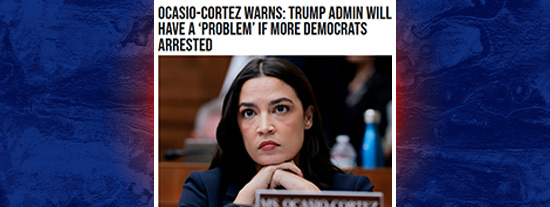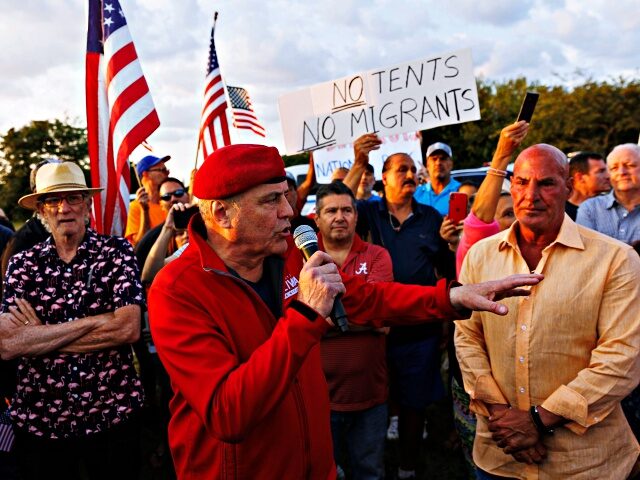Democrats’ climate change blame game for Hawaii fire confronted by reality after Maui identifies cause

Hawaiian officials blamed this week’s catastrophic wildfires on alleged failures by the state’s largest power utility and downed electricity lines, after Democrats blamed global warming.
In a suit filed on Thursday, the Maui County government in Hawaii alleged that Hawaiian Electric Company and its subsidiaries had failed to turn off live electrical equipment during a windstorm with a red flag earlier this month. The lawsuit claims that due to this failure, power lines downed by the utility company caused a series deadly fires in the island.
Maui County announced its lawsuit by saying that “the lawsuit alleges the Defendants were negligent in failing to turn off their electrical equipment on August 7th despite a National Weather Service Red Flag Warning.”
The lawsuit also alleges that HECO’s energized or downed powerlines ignited dry fuel, such as grass and brushes, causing fires,” was added to the announcement. The lawsuit alleges that failure to maintain system and grid caused systemic failures, starting three fires on 8th August.
|
Maui County claimed in the lawsuit that HECO had a duty to “properly maintain and repair electric transmission lines and other equipment, including utility poles, associated with the transmission of electricity and to keep the vegetation properly trimmed, maintained and so as to avoid contact with overhead powerlines and other electrical equipment.”
Hawaii’s governor, as well as a number of Democratic legislators, have all criticized the event. Josh Green has blamed global warming for the tragedy, which claimed at least 115 lives.
This is devastating. In a blog post published on X, Sen. Ed Markey (D-Mass. ), an original sponsor of Green New Deal and a senator from Massachusetts, said: “This is a climate crisis.” “I stand with my friends and co-workers from Hawai’i – we must act quickly, provide aid and invest in a safe and resilient future.”
“Heartbreaking Fires in Hawaii!” “It is clear to scientists that climate chaos, wreaking havoc across ecosystems, is the new normal,” said Sen. Jeff Merkley of Oregon in an additional post. We need to act immediately, or it will only get worse.
Ro Khanna (D-Calif.), who led a recent congressional inquiry into Big Oil and spearheaded the investigation, has called on President Biden, in response to these fires, to declare a climate emergency.
Rep. Cori bush, D-Mo. added, “My heart breaks to hear about the devastation on Maui.” The climate crisis has arrived and is killing people. It’s time [Biden] declared a climate crisis.
Sen. Dick Durbin (D-Ill.) joined the chorus, saying that the wildfires are a “devastating picture of our planet, as we fail adequately to address the climate crises.”
John Podesta, the White House’s clean energy czar, called for policies that would reduce carbon emissions in order to combat future natural disasters such as the Maui wildfires. He said they were “fuelled by climate change.”
“This summer brought climate disasters after climate disasters, from extreme heat and flooding in Vermont and Upstate New York to thick smoke caused by Canadian wildfires,” Podesta said to reporters on August 16. “And we have all watched in horror, as the Maui Fires have claimed more than 100 lives – the highest loss of life in a fire for the past 100 years in America.”
He continued, “To prevent these disasters getting worse, we must cut the carbon emissions that are driving the climate crises, and this is what the Inflation Reduction Act aims to do.”
But experts have cast doubt on the claims that climate changes caused the Maui fires.
They said that the fires were largely the result of years’ worth of poor brush and forest management, as well as declining agriculture. They said that such conditions allow fires spread quickly and make them harder to contain.
Clay Trauernicht is a University of Hawaii at Manoa environmental management professor. He said that blaming the fires on climate and weather was misleading. “Hawai’i’s burning problem is caused by the unmanaged nonnative grasslands left over from decades of declining agricultural practices.”
He continued, “These savannas cover about a half-million acres on the main Hawaiian Islands. They are mostly the result of the land clearing done for plantation agriculture in the late 1800s and early 1900s.” The transformation of the landscape to a savanna has made it more susceptible to bad “fire weather” — hot, dry and windy conditions. This means that we also get a huge build-up of fuels when it rains.






:max_bytes(150000):strip_icc():focal(749x0:751x2)/gavin-newsom-071824-a297038f4a2c43c18431de37222aae7e.jpg)


No Comments